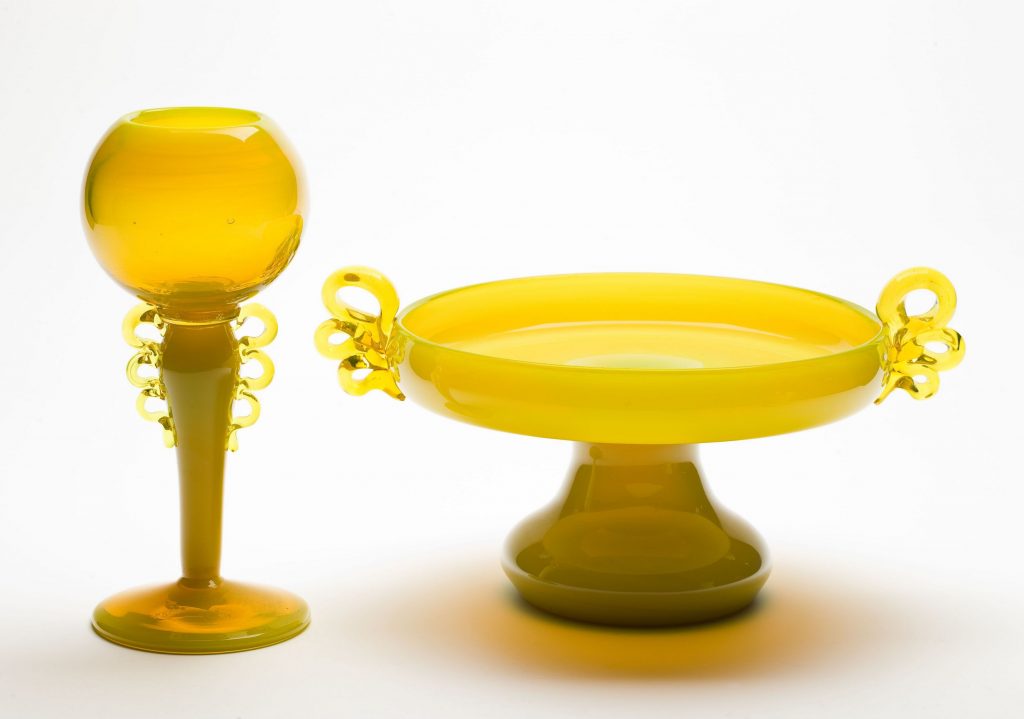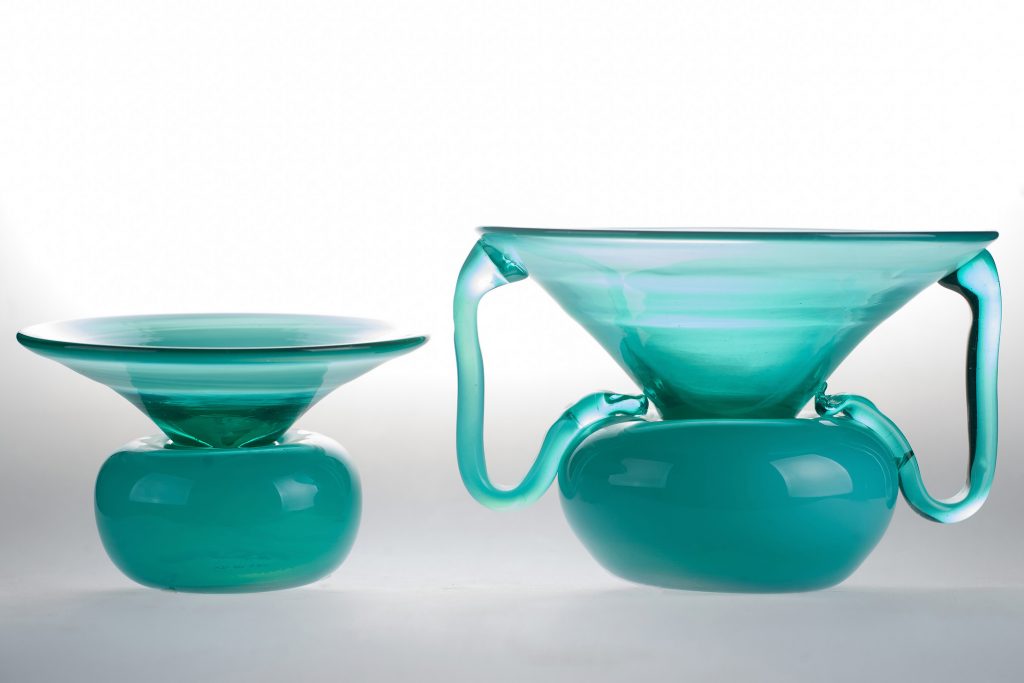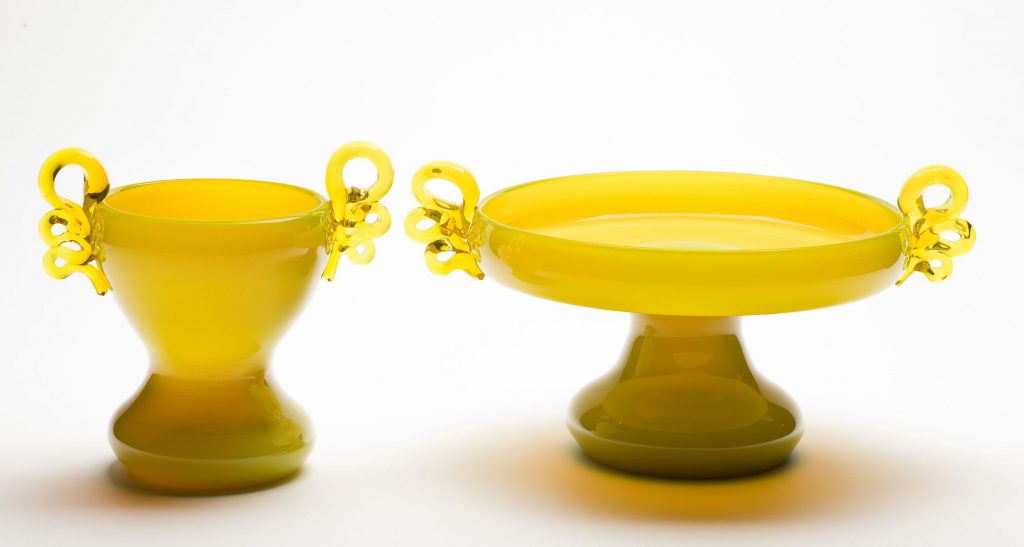
Decorative glass designer and stained glass artist. One of the creators of the famous “Krakow glass”.
The Krakow branch of the Institute of Glass and Building Ceramics (currently: Łukasiewicz – Institute of Ceramics and Building Materials, Glass and Building Materials Division) was famous in Poland for the production of colorful vases, jugs, bowls, plates, candlesticks, and other glass accessories, known as “Krakow glass”. Queues of people willing to buy colored glass, or just to look at them, were forming in the company shop on Mikołajska Street. In the drab reality of communist Poland, the glass miracles from the glassworks on Lipowa Street were a dream gift, especially for a wedding. They were designed by Jerzy Słuczan-Orkusz, Zofia Pasek, Marian Gołogórski, Barbara Świstacka and Michał Jakubas, and their implementation, with the use of traditional glass tools, by qualified steelworkers.
Aleksandra Skorek, manager of Centre Glass and Ceramics “Lipowa 3” in Kraków


MORE PHOTOS:
Born in 1948. Graduate of the State Secondary School of Fine Arts in Nowy Wiśnicz (1967), specialisation: artistic ceramics.
Technologist at the Cooperative Technical Backup Centre in Chorzów (1968‒1971). Mould constructor at the “Bogucice” Porcelain Plant (1971) and the “Ząbkowice” Household Glassworks (1972–1973).
In 1973–1982 he was employed as a modeller of plaster moulds and then as a glass designer in the Experimental Department of the Institute of Glass and Ceramics in Kraków, where he designed 159 patterns for vases, candlesticks, decorative cups and amphorae made of coloured glass.
In 1983 he registered a patent on the method of combining glass with metal alloys, especially tin. For this invention, he received the first prize in the Tournament of Young Masters of Technique of the Kraków Voivodeship.
He was also a stained-glass maker; his works can be found in Kraków’s churches, including in the Church of the Sacred Heart of Jesus in Krakow-Łagiewniki. His stained-glass windows Poland in a crown of thorns and Poland under the protection of the Mother of God were given to Pope John Paul II. In the Town Hall of Łazy there is a stained-glass coat of arms of the town and the original insignia of the local authority by his authorship.
Died in 2007.
Works in the collections of the National Museum in Kraków, the Schoen Palace Museum in Sosnowiec, the Ceramics and Glass Centre (Łukasiewicz – Institute of Ceramic and Building Materials) in Cracow.
